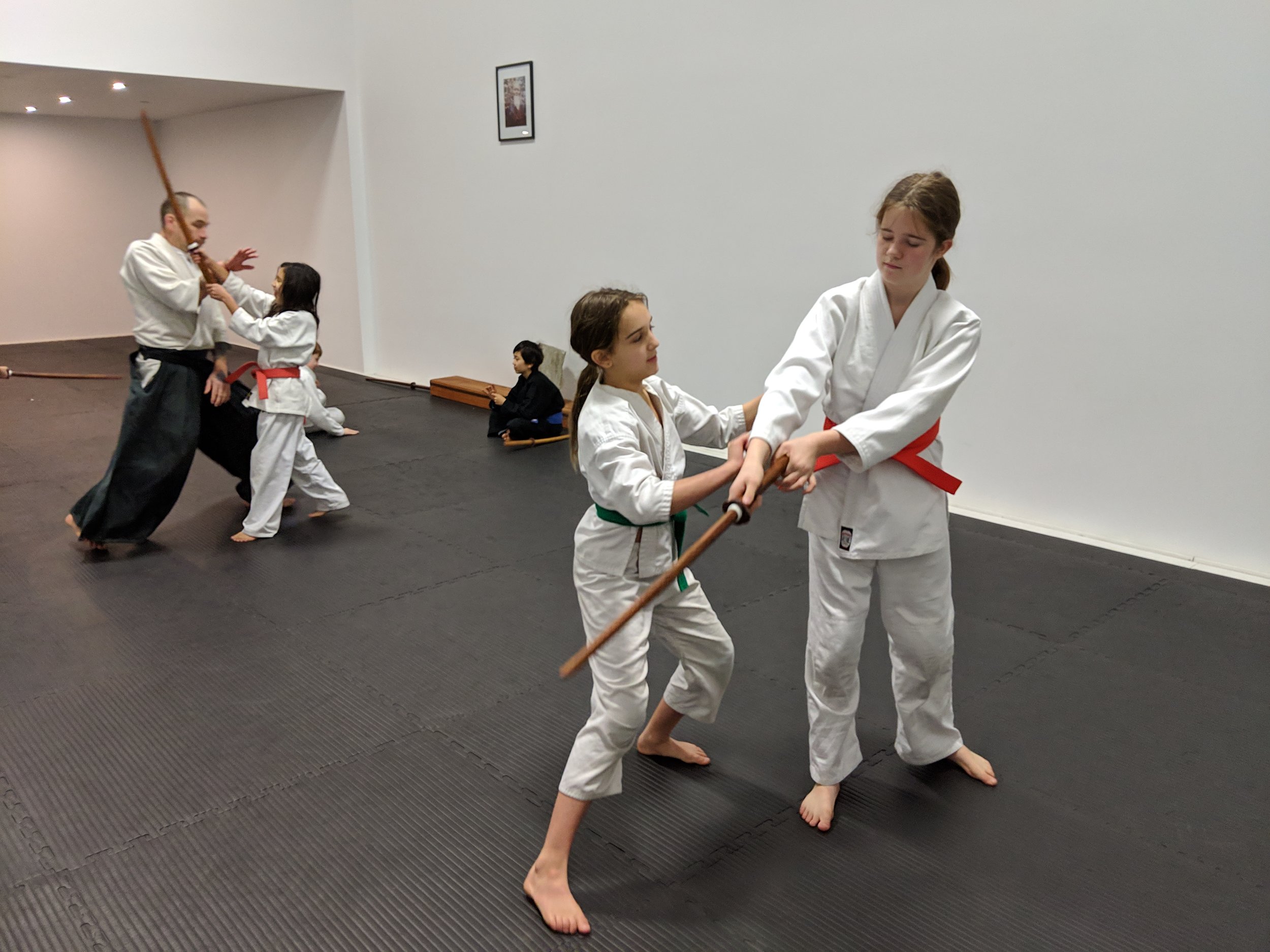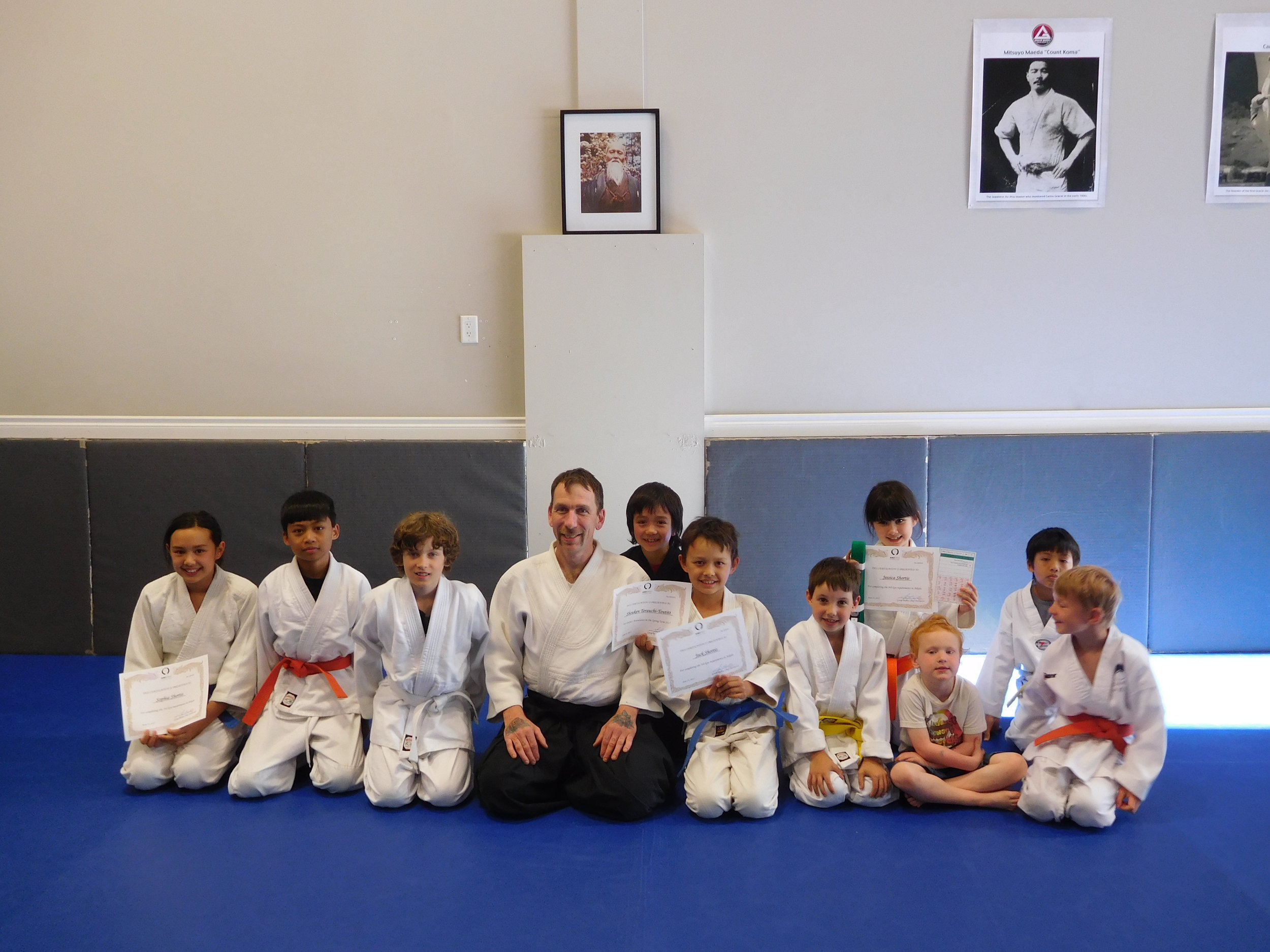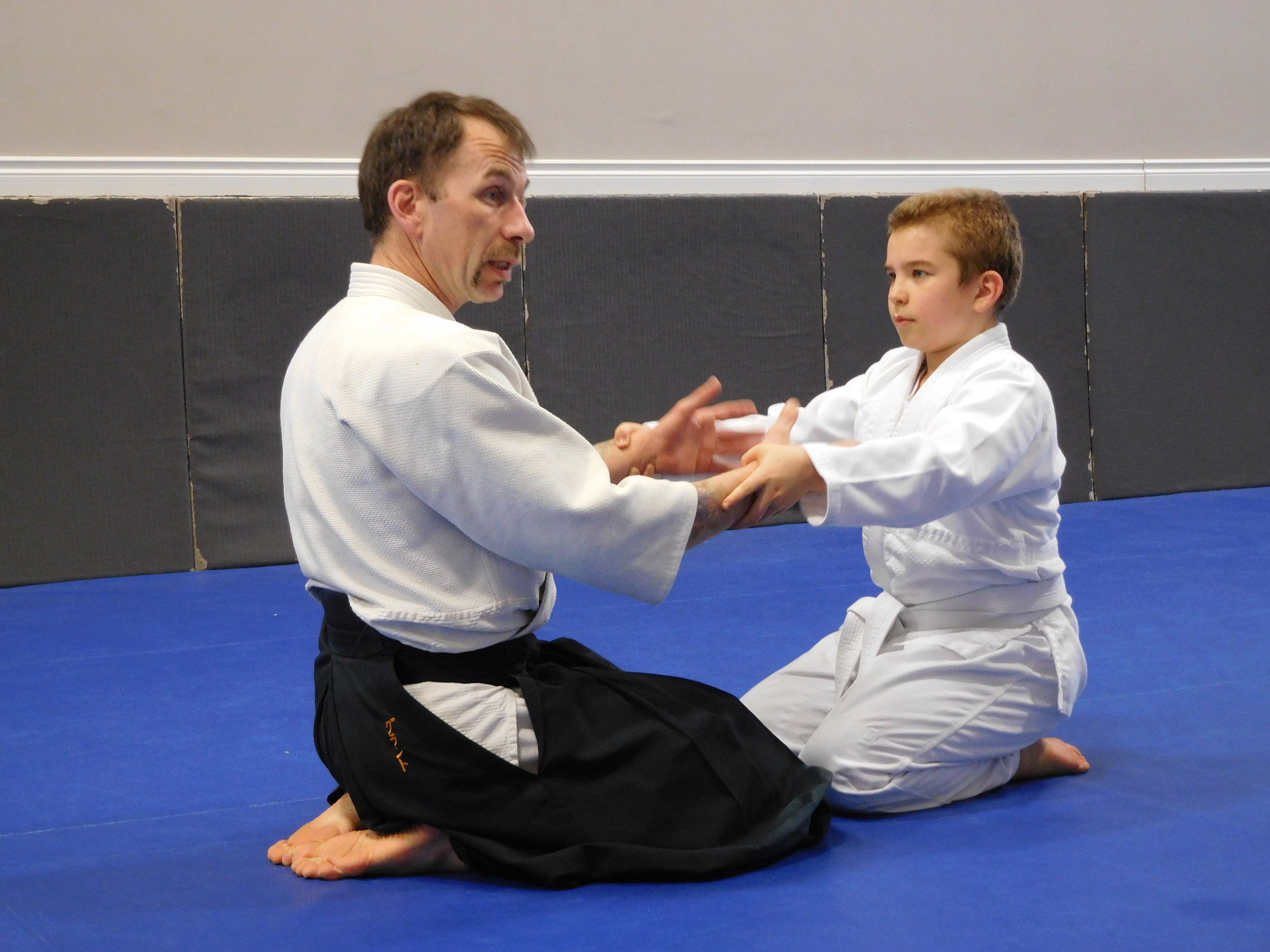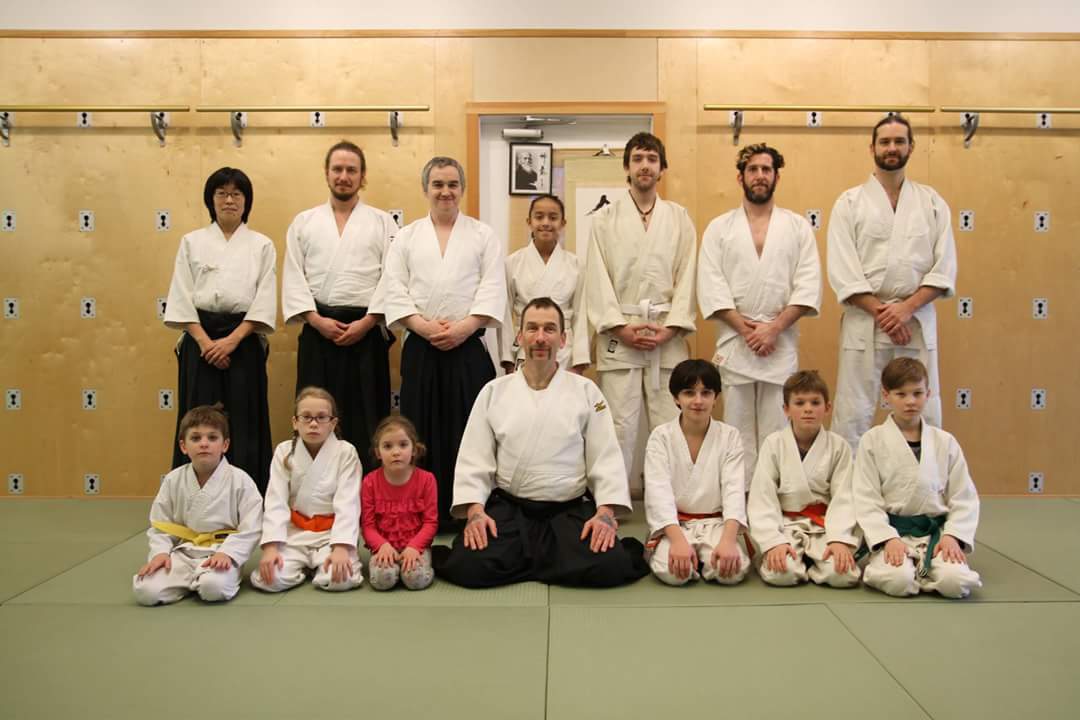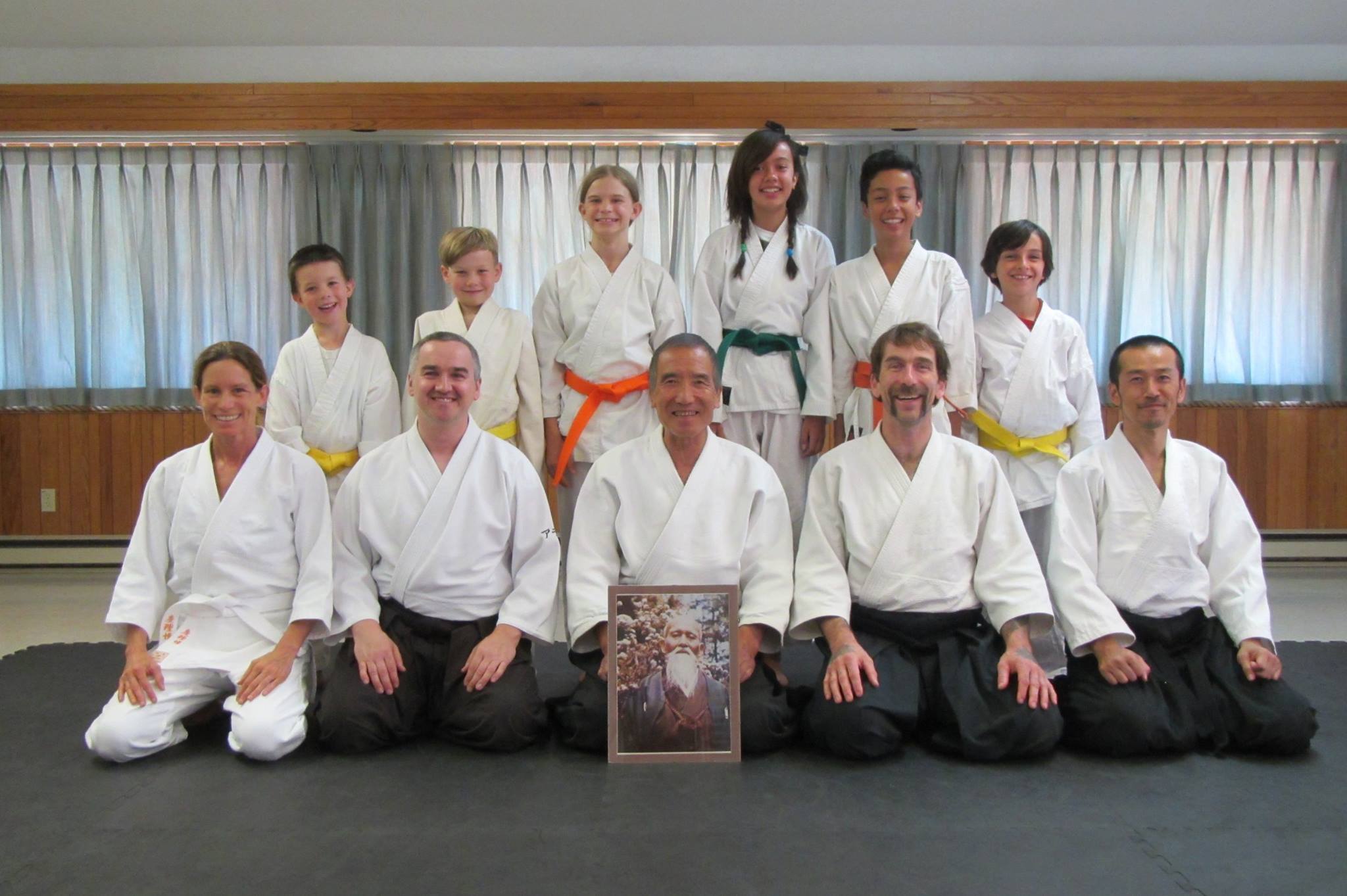At Aikidaily, we believe fun is as important as discipline. Our patient instructors encourage and enable children to do their best as they learn traditional Aikido basic movements, techniques, and break falls (tumbling) in a safe, playful environment.
What are the Benefits of Aikido for Children?
Our classes are specifically designed for children to learn the principles and techniques of Aikido, a Japanese martial art. Aikido focuses on using the opponent's energy and movements to neutralize attacks rather than relying on brute force. The focus is not on winning or dominating another but to work cooperatively to learn and reach a mutually beneficial understanding.
In Aikido for kids, emphasis is placed on developing physical coordination, flexibility, balance, and agility. Additionally, children learn important life skills such as discipline, respect, and self-confidence. The training typically includes various exercises, drills, and techniques tailored to suit the age and skill level of the children.
Aikido for kids provides a safe and supportive environment for children to learn self-defense techniques while also promoting character development and personal growth. Many parents appreciate Aikido for its emphasis on non-violent conflict resolution and its ability to instill values of cooperation and harmony. Overall, Aikido for kids offers a holistic approach to physical and mental well-being, helping children to develop both as martial artists and as individuals.
Is Aikido the Right Martial Art for your Kid?
We are happy to offer an introductory week of training for your child to try Aikido. This offer includes a borrowed uniform and up to three classes.
What can I expect from the children's classes?
In our K to grade 6 kids classes and tween classes, you can expect a structured and engaging environment where children learn the principles and techniques of Aikido in a fun and supportive atmosphere. Here's what you can typically expect:
Warm-up exercises: Classes often begin with a series of dynamic stretches and warm-up exercises to prepare the body for training. These may include jogging, stretching, and basic movements to improve flexibility and coordination.
Basic techniques: Children will be introduced to fundamental Aikido techniques, such as rolls, falls, and basic joint locks and throws. These techniques are taught gradually, with a focus on proper form and safety.
Partner drills: Kids will practice Aikido techniques with partners, learning how to blend with an opponent's energy and execute techniques effectively. Partner drills help children develop timing, spatial awareness, and cooperation skills.
Games and activities: Many kids Aikido classes incorporate games and activities to make learning enjoyable and engaging. These may include Aikido-inspired games that reinforce martial arts principles, such as balance, timing, and spatial awareness.
Character development: In addition to physical techniques, kids Aikido classes often emphasize character development and values such as respect, discipline, cooperation, and self-confidence. Instructors may incorporate discussions or activities to reinforce these principles.
Belt progression: Like in other martial arts, children in Aikido may have the opportunity to earn belts as they progress through the curriculum. Belt tests are conducted periodically to assess students' proficiency in techniques, etiquette, and understanding of Aikido principles.
Safe and supportive environment: Kids Aikido classes are designed to be safe and supportive, with instructors who are experienced in working with children. Emphasis is placed on creating a positive learning environment where children feel encouraged to try new things and grow both physically and mentally.
Overall, a kids Aikido class provides an opportunity for children to learn self-defense skills, improve physical fitness, develop character, and have fun in a structured and supportive setting.











